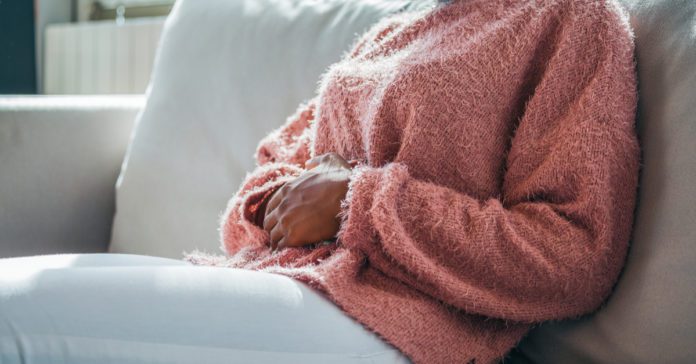Many girls and women feel discomfort when they menstruate. You could feel this pain around your belly, lower back, and thighs. The pain from period cramps can range from mild to severe, interfering with normal life activities. It can last for a few days every month.
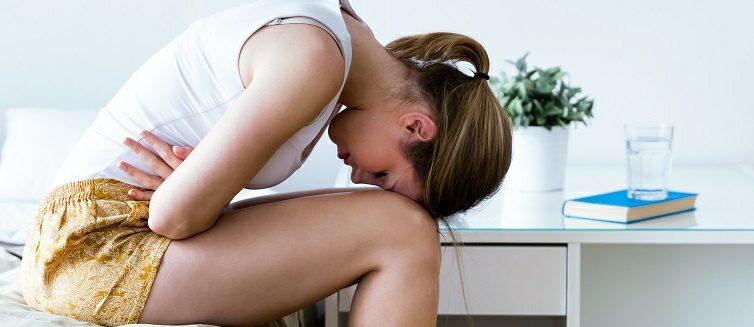
Introduction
Menstrual cramps (also known as dysmenorrhea) are one of the most common symptoms of menstruation. They refer to the throbbing, aching pain that you feel just before and during your menstrual period. The pain may be dull or sharp and can be felt in your lower abdomen and can radiate to your pelvis, lower back, and thighs. Usually, cramps are worse at the beginning of your period and the intensity decreases as the days go on.
Some girls and women may also experience headaches, diarrhea, nausea, or vomiting with cramps. During your period, the muscles of your uterus (womb) contract and relax to shed the lining of your womb and allow it to leave your body through the vagina. When you feel cramps, it’s often your muscles contracting.
Menstrual cramps begin within the first one to two years of having your periods. Many girls and women then get them monthly. They usually become less painful as you grow older and may stop after your first baby.
Causes of Cramps
Most menstrual cramps are grouped as “primary dysmenorrhea”. This means they are caused by increased production of or sensitivity to prostaglandins. Prostaglandins are hormones that cause your womb (uterus) to contract. When your uterus contracts, the blood supply to it is cut off or greatly reduced. When that happens, the uterus is deprived of oxygen and you feel pain.
Other factors (also risk factors) include:
- Being below the age of 20
- Having your first period
- Starting puberty early (11 years or younger)
- Having a heavy blood flow (menorrhagia)
- Having irregular menstrual bleeding (metrorrhagia)
- Having a family history of menstrual cramps
- Smoking
- Excessive drinking of alcohol
- Being overweight or obese
- Never been pregnant
Some conditions are also associated with severe menstrual cramps and they include:
- Uterine Fibroids:
- These are growths within the uterus and they occur commonly in women. These growths could be so small that only a microscope can make you notice them. They could also be large enough that they change the shape of your uterus. Statistics state that three out of four women will develop uterine fibroids in their lifetime. Usually, women with fibroids feel no symptoms.
- Uterine fibroids can increase your blood flow and cause severe menstrual cramps. Increased blood flow increases the size and quantity of blood clots. To expel them, your uterus needs to contract harder, thus increasing your pain.
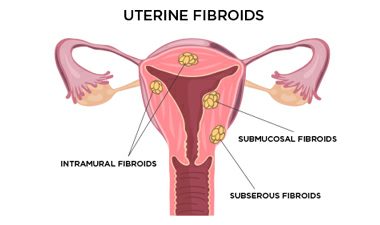
- Endometriosis:
- These are abnormal uterine tissue growths found outside the uterus. They may be found on surrounding structures such as the ovaries, bladder, fallopian tubes, and the pelvic floor. In extreme cases, they may be found on organs like the liver, intestines, diaphragm, lungs, and even the brain.
- When left untreated, endometriosis can lead to chronic inflammation, adhesions, blood-filled cysts (chocolate cysts), and internal bleeding. These can cause severe menstrual cramps when you menstruate although the pain caused isn’t limited to your menstrual period. You may also experience back pain and diarrhea.

- Use of contraceptives:
- The usual culprit is copper IUD – a long-lasting, nonhormonal birth control. The device is inserted into your uterus by a licensed doctor or midwife and can prevent pregnancy for up to 10 years. It works by releasing copper, which kills the sperm and prevents implantation.
- Unlike hormonal IUD, copper IUD makes menstrual bleeding heavier and more painful, particularly for the first few months after insertion. If you suddenly feel pain after several months and years of insertion, see your doctor. It may be due to something else other than your copper IUD.
- Pelvic inflammatory disease (PID)
- PID is an infection of the female reproductive system. It is usually caused by untreated or poorly treated sexually transmitted infections (STIs). It can cause painful menstrual cramps, alongside inflammation, adhesions, scarring, and infertility. The severe menstrual pain comes from the influence of hormones on the additional structures- adhesions and scar tissue, apart from the uterus.
- PID can be treated using antibiotics. However, antibiotics cannot treat any structural damage the PID might have caused to the reproductive tract. Surgery may be required. You can prevent PID by practicing safe sex and getting tested routinely for sexually transmitted infections (STIs).
- Adenomyosis
- This condition is similar to endometriosis. However, in adenomyosis, the uterine tissue (endometrium) is not found outside the uterus. Instead, it grows and is embedded deep inside the myometrium (muscular layer of the uterus). Adenomyosis causes painful menstrual cramps that can last for 1-2 days. It is usually seen in women above the age of 30 who have had children. It may be seen in girls and younger women.
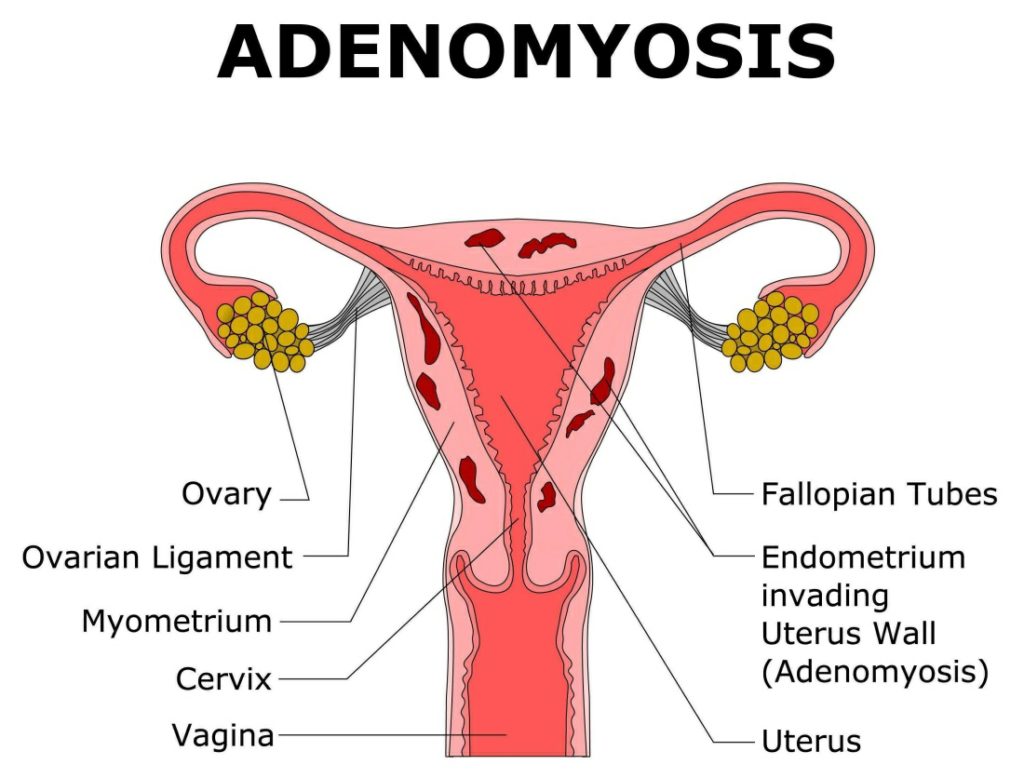
- Uterine defects
- The uterus forms from two structures known as Müllerian ducts. Uterine defects are structural anomalies where the uterus does not develop correctly. Examples of these include septate uterus (where the uterus is divided by a fibrous band of tissue), bicornate uterus (where two uteri lead to one cervix), uterus didelphys (where there are two uteri, two cervices, and a septum, or membrane dividing the vagina) and unicornuate uterus (where the uterus develops from only one Müllerian duct). The severe menstrual cramps are caused by blockages and membranes that divide the uterus and vagina.
- Cervical stenosis
- Some women have small cervical openings which can affect menstrual flow. There is a build-up of pressure within the uterus causing painful cramps.
Symptoms of Cramps
Symptoms of menstrual cramps include:
- Throbbing or aching pain in your lower abdomen (sometimes intense)
- A feeling of pressure in your abdomen
- Pain that starts some days before your period, heightens within 24 hours of starting your period, and improves after 2 to 3 days.
- Pain that radiates to your lower back, hips, and thighs.
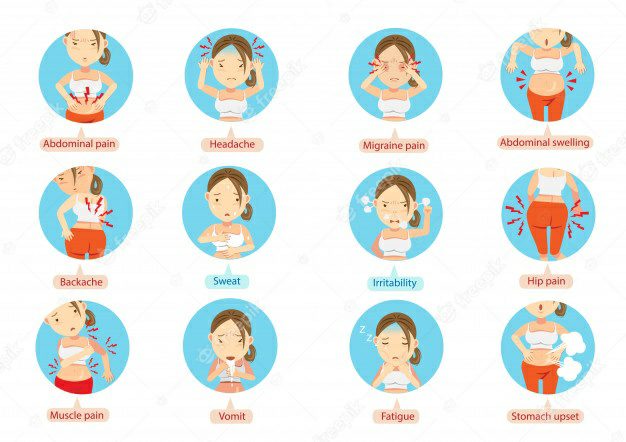
The pain can be accompanied with:
- Stomach upset
- Nausea
- Vomiting
- Diarrhea or loose stools
- Headaches
- Dizziness
- Weakness
- Irritability ad mood swings
- Fainting (in extreme cases)
See your doctor if:
- Your menstrual cramps grossly interfere with your daily life activities every month.
- Your symptoms gradually worsen. For example, bleeding becomes heavier requiring you to use more than one pad or tampon per hour. Also, if your pain feels different, suddenly worsens or is longer than usual (more than 2 to 3 days).
- You suddenly start having severe menstrual cramps after age 25
- You notice signs of infection during your period. These include fever, chills, headaches, and body aches.
Complications of Cramps
Menstrual cramps usually do not have medical complications. However, they can interfere with your normal day-to-day activities including school and work.
However, conditions associated with painful menstrual cramps can have complications. Endometriosis can lead to infertility. Pelvic inflammatory disease (PID) can cause scarring within your fallopian tubes and increase your risk for ectopic pregnancy. Ectopic pregnancy happens when the fertilized egg implants outside your uterus.
Natural Ways to Relieve Cramps
There are medical and surgical methods of treating dysmenorrhea. However, the following are natural ways to relieve cramps:
- Staying hydrated
- Dehydration can increase your risk for menstrual cramps. Try to drink 6 to 8 glasses of water every day. If the day is hot, you exercise or do yoga; you will need to drink more. Drinking water also relieves bloating. Avoid alcohol; it can cause dehydration. If you experience diarrhea during your period, you must drink plenty of water to replace lost fluids. If you are not a fan of plain water, you can drink teas (mint, ginger, or chamomile). You may also take flavored mineral water or add cucumber, lemons, or mint to water.
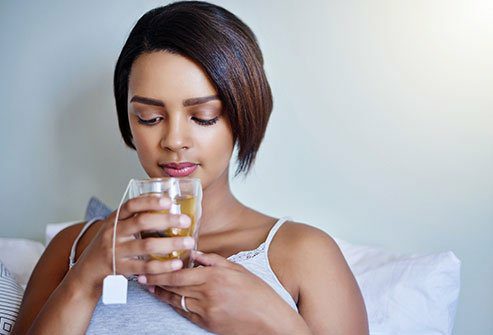
- Applying Heat
- You can relieve menstrual cramps by applying heat to your abdomen and lower back. A study found out that applying a heat patch at 104°F (40°C) was as effective as taking ibuprofen ( a pain medication) to relieve cramps.
- They help relax the muscles of your uterus and also improve blood circulation in your abdomen. They also help relieve other menstrual symptoms like fatigue and mood swings. You may use a hot water bottle, a hot towel, a heating pad, or take a warm bath. Heat patches are however more convenient if you’ll have to move around.
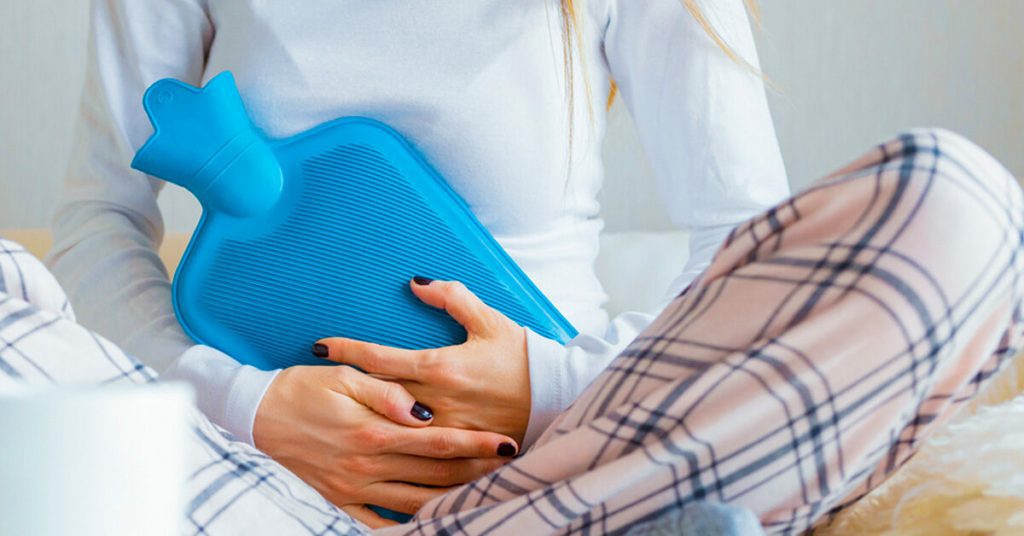
- Massage
- The focus of the massage is around your abdomen, side, and back. Research shows that massage helps to significantly reduce menstrual pain, particularly associated with endometriosis. The use of essential oils has added benefits. Examples include lavender, rose, sage, clove, cinnamon, and marjoram.
- It is advised you massage your abdomen with essential oils for five minutes a day before and during your period. It reduces period pain and improves blood circulation in your abdomen. According to a study, massage with essential oils (lavender, clary sage, and marjoram oil) reduced the amount and duration of pain. This was in comparison with massage with cream with synthetic fragrance.
- It is important to always dilute your essential oils with a carrier oil. Carrier oils work by helping the essential oil enter into your skin and spread over a large area. Examples include coconut oil, grapeseed oil, jojoba oil, sweet almond oil, or any vegetable or nut oil. A safe dilution method is one drop of essential oil to a teaspoon of carrier oil.
- Avoiding certain foods
- Foods that cause discomfort, bloating and water retention should be avoided during your periods. These include fatty foods, carbonated beverages, caffeine, alcohol, and salty foods. Staying away from these foods can relieve cramps and reduce tension. Substitute carbonated and caffeinated beverages with ginger tea, mint tea, or warm lemon water. You can also snack on fruits if you need a sugar fix.
- Adding herbs to your diet
- Herbs contain anti-inflammatory and antispasmodic compounds which help reduce uterine contractions and swelling associated with menstrual pain. Examples of these herbs include:
- Chamomile: contains glycine which helps relieve muscle spasms and relax nerves. Drink two cups of chamomile tea every day a week before your period.
- Fennel seeds (or extract): relieves menstrual cramps by inhibiting uterine contractions caused by prostaglandins. Take 30mg of fennel extract four times a day for three days from the onset of your period.
- Herbs contain anti-inflammatory and antispasmodic compounds which help reduce uterine contractions and swelling associated with menstrual pain. Examples of these herbs include:
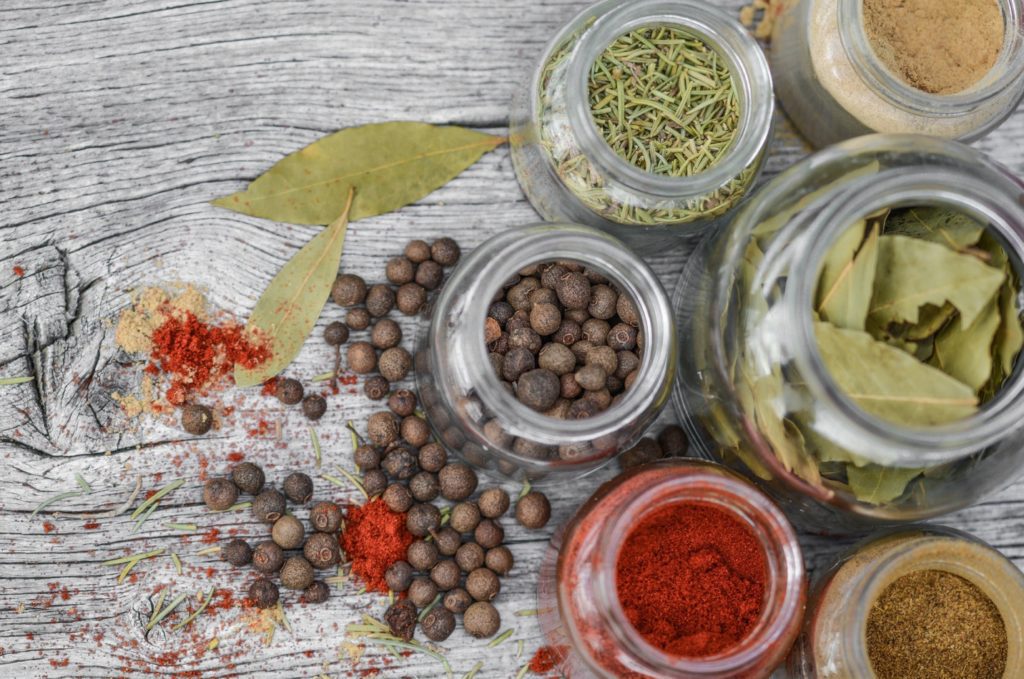
- Ginger: is as effective as ibuprofen in relieving pain. You may grate a small piece of ginger into hot water to drink or take 250mg of ginger powder four times a day for three days.
- Cinnamon: it improves menstrual symptoms including pain, blood flow, and nausea, and vomiting. You can take it sprinkling a bit into your cup of tea or cereal. You may also take 840mg of cinnamon capsules three times a day during the first three days of your period
- Dill: Take 1000mg of dill for five days, starting two days before your cycle. It eases menstrual cramps.
Other herbs include Chinese angelica root, licorice root, red peony roots, turmeric and pycnogenol.
- Exercise
- Period cramps can be relieved by low-to-medium intensity aerobic exercise. Exercise helps release endorphins- chemical substances in the brain that boost wellbeing. Research showed that women who had 30 minutes of aerobic exercise three days a week, for eight weeks experienced reduced menstrual cramps. Examples of these exercises include brisk walking, biking or cycling, using the stairs instead of the elevator, dancing, swimming, or playing a sport.
- Soaking in a tub
- This is a form of applying heat to your pelvic muscles. That way, they help your muscles relax and relieve pain. You can add a few drops of essential oils like lavender, rose, or marjoram to your bathwater. Then relax in the warm tub for at least 15 minutes for best results.
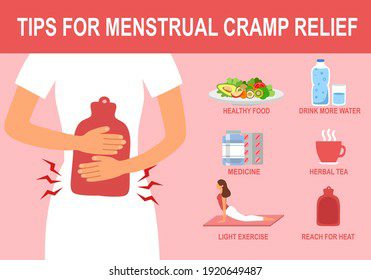
- Yoga
- This is similar to aerobic exercise and can help relieve menstrual cramps. Research showed that women who participated in 60 minutes of yoga every week for 12 weeks experienced reduced period cramps. It is best to combine both the physical and relaxation components of yoga for effective results.
- Get adequate sleep and rest:
- Poor sleep quality can result in severe menstrual cramps. A study found out that women who suffered from insomnia had more severe dysmenorrhea and experienced disruption of daily activities compared to women who did not have insomnia. Adequate sleep and rest help prevent and relieve period pain. Cultivating good sleep hygiene is important to achieve this. This involves having and keeping to a night routine that enables you to go to bed at the same time every day. You may have activities such as having a bedtime shower, listening to slow, soothing music, reading a book, or taking a cup of tea that will position your body and mind for sleep.
- Vitamin D:
- Increased production of prostaglandins causes painful cramps. Vitamin D reduces the production of prostaglandins. A study showed that women who had menstrual cramps due to prostaglandins and low vitamin D levels benefitted from high doses of vitamin D. They experienced significant pain reduction. The cheapest and best source of Vitamin D is sunlight. You may also need vitamin D supplements.

Conclusion
Menstrual cramps are one of the most common symptoms of menstruation. You could feel this discomfort around your belly, lower back, and thighs. The pain may be dull or sharp, usually just before your period, peaking within 24 hours of onset and subsiding within 2 to 3 days of your periods. It is important to stay hydrated, eat a low-fat, vegetarian diet, avoid junk foods, sleep well and employ massage and heat to prevent and relieve menstrual cramps.
Sources:
https://www.mayoclinic.org/diseases-conditions/menstrual-cramps/symptoms-causes/syc-20374938
https://www.healthline.com/health/womens-health/menstrual-cramp-remedies


